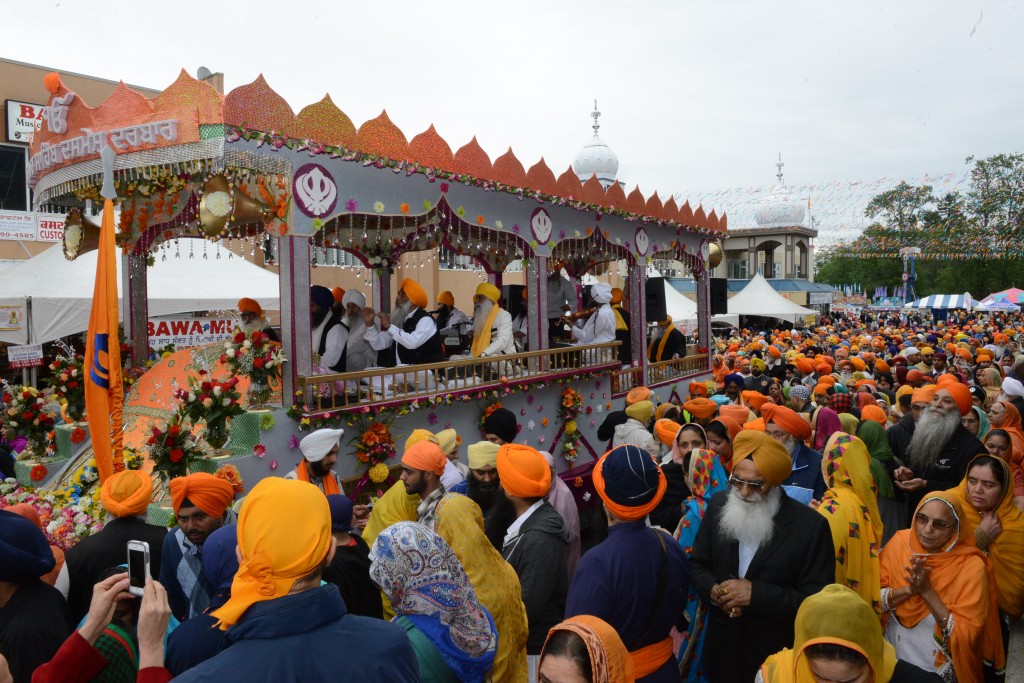DESIBUZZCanada
Events Listings
Dummy Post

International Day Of Yoga To Be Virtually Celebrated Saturday At 4pm

CANCELLED: Coronavirus Fears Kills Surrey’s Vaisakhi Day Parade

ADVERTISE WITH US: DESIBUZZCanada Is The Most Read South Asian Publication Online

SURREY LIBRARIES: Get Technology Help At Surrey Libraries

WALLY OPPAL: Surrey Police Transition Update On Feb. 26

GONE ARE THE DAYS - Feature Documentary Trailer

Technology Help At Surrey Libraries

Birding Walks

Plea Poetry/short Story : Youth Contest

International Folk Dancing Drop-in Sessions
CONSTITUTION DAY: India Celebrates Law Day On November 26
- November 27, 2021

By Zile Singh
Constitution Day (Samvidhan Divas) of India– November 26.
----------------
November 26is the Indian Constitution Day. It is also known as the Law Day. The world’s largest,rigid as well as flexible comprehensive document covering the minutest details of good governance in a liberal democracy was handed over to the Constituent Assembly consisting of 284 eminent members, including 15 women, by Dr. Bhim Rao Ambedkar, the Chairman of the Drafting Committee of the Constitution on this day in 1949. The Constitution came into force two months later on January 26, 1950. Dr. B.R. Ambedkar is therefore called as ‘the Chief Architect’. Some call him ‘Father of the Indian Constitution’. Ambedkar is a recipient of “Bharat Rattan”, the highest Civilian Award conferred by the Government of India posthumously in 1990. Dr. B.R. Ambedkar was voted as the ‘Greatest Indian’ in a poll spearheaded by History TV18 and CNN IBN in 2012.
The Drafting Committee was constituted on August 29, 1947 with seven members under the chairmanship of Dr. Ambedkar. It took 2 years, 11 months and 18 days to complete it. It has been derived from various leading Constitutions of the world. The psyche of the diverse Indian population and the sustainability of liberal democracy were given due prominence while drafting the Constitution. Not only the psychological but also the philosophical aspect of the Indian sub-continent was taken into account. The trauma of the Partition was a glaring example to safeguard the interests of the minorities and the aspects of diversity. All efforts were made to address the problems of communalism and the degrading system of caste by enshrining in the Constitution the Fundamental Rights, the Directive Principles of State Policy and the affirmative actions. Untouchability was abolished and its practice declared an offence punishable under the law. The ‘Unity in Diversity’ was upheld by giving due recognition to all religions, regions, languages, customs and traditions. In addition to the Drafting Committee, several other Committees, headed by other experts also were constituted to gave a final shape to the Constitution. The Union Constitution Committee and the Provincial Constitution Committee were headed by Jawaharlal Nehru and Sardar Patel respectively. Both, Dr. Ambedkar and Patel were against the Parliamentary form of Government. Speaking on the occasion of the final adoption of the Constitution, Dr. Rajendra Prasad, President of the Constituent Assembly said, “ …The Constituent Assembly appointed the Drafting Committee which worked on the original draft prepared by Mr. B.N. Rau, another constitutional and administrative expert of high esteem. There were not less than 7635 amendments of which 2473 amendments were moved. I am mentioning this only to show that it was not only the Members of the Drafting Committee who were giving their close attention to the Constitution, but other Members were vigilant and scrutinizing the Draft in all its details, sentence and word wise…” Dr. Rajendra Prasad further added, “ .. Some people have doubted the wisdom of the adult franchise. But I have no doubt in my mind that the people will be able to take measure of their own interests and also the interests of the country. I cannot say the same thing about the other people who may try to influence them by slogans and placing before them beautiful pictures of impracticable programmes. I have realized as nobody could have, with great zeal and devotion the Members of the Drafting Committee and especially its Chairman, Dr. Ambedkar in spite of his indifferent health, have worked.”
A Secular Constitution demands the following: ‘Don’t go around telling the world that the Constitution owes you Fundamental Rights and Freedoms. Before that, remember that you owe Duty to the country through its Constitution.’ The Constitution of India is for its sovereignty, secularism, socialism, democracy and republic. Rights, freedoms and duties go hand in hand. The imbalance leads to chaos and lawlessness.
The Indian Constitution is a Classic Document which people praise but do not read and follow. In the name of the Constitution, everyone has to be vigilant about misleading information by vested interests before resorting to violence and rioting because: “A lie can travel halfway around the world while the truth is putting on its shoes.” Sectarianism and religious fundamentalism are the enemies of a Secular Constitution.
The Indian Constitution is a rigid as well as a flexible document. It has laid down measures to amend it in national interest. So far, the Constitution has been amended 104 times. Dr. Rajendra Prasad, also said, “Whatever the Constitution may or may not provide, the welfare of the country will depend upon the way in which the country is administered.”
Dr. B.R. Ambedkar, the Chief Architect of the Constitution said, “If I find the Constitution being misused, I shall be the first to burn it.”
For the first time, Prime Minister Narendra Modi, in 2015 decided to call a Special two-day Session of Parliament to celebrate Constitution Day every year. Likewise, the Indian Embassies, High Commissions and the Consulates also celebrate the Day in an appropriate manner. This year, the Day carries added importance because India is celebrating the 75th Anniversary of Indian Independence (Azadi Ka Amrit Mohotsav) also. The Day was celebrated yesterday by the Indian Consulate General, Vancouver and the Chetna Association of Canada together in Surrey.
---------------------
Zile Singh is a well-respected Columnist, Writer and a Vipassana Meditator. He has a Post-Graduate Diploma in Human Rights. He can be reached atzsnirwal@yahoo.ca


















